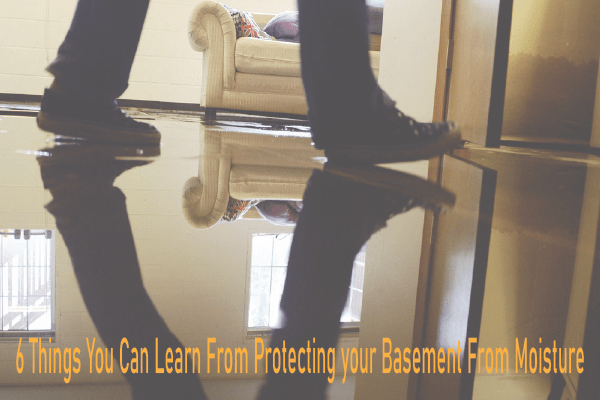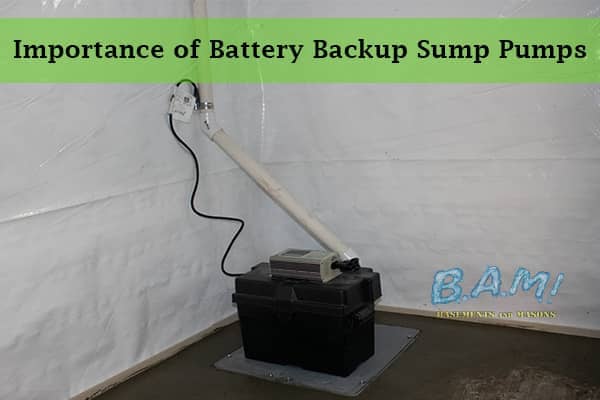Some Ideas on Best Basement Waterproofing You Need To Know
Table of ContentsThe 9-Minute Rule for Best Basement WaterproofingAll About Best Basement WaterproofingBest Basement Waterproofing Fundamentals ExplainedBest Basement Waterproofing for BeginnersLittle Known Facts About Best Basement Waterproofing.
usages excavation techniques toward all-time low of the structure's structure. involves removing moisture after it has actually gone into the basement. AdvantaClean's skilled specialists and service technicians will certainly find the water source. If wall or piece cracks are present, we will certainly infuse polyurethane and epoxies right into the splits and seal the concession, stopping further wetness from getting in.
If there's condensation on the outside of the foil, you have high moisture in your basement. If the aluminum foil has condensation on the within surface area (following to the wall surface), the dirt around your house may be naturally damp from a high water table or poor dirt water drainage.
You can waterproof just your interior wall surfaces, which may fix the trouble. Once they dry out, they adhere completely to concrete and stonework walls.
Best Basement Waterproofing Things To Know Before You Get This
Swirl the brush at the final phase of application to give the wall an eye-catching, ended up look. Concrete waterproof coatings can't be applied to previously repainted surface areas; examine the tag. A 5-gallon bucket costs about $60. Understood as densifiers, they are appropriate just for wall surfaces that haven't been painted or sealed.
But you brush, roll, or spray it on far more thickly one gallon covers just 75 square feet, not the 300 square feet common with common paint. Water resistant paint is great for DIY application. You can apply it over repainted surface areas, and paint over it once it's treated (one gallon costs $37).
It can cost $10,000 to $15,000, relying on the job needed. Outside waterproofing includes excavating around your home to the full depth of the structure walls, after that setting up a water-proof finish or membrane covered by drain panels. The panels More Info offer a very easy path for water to flow to an exterior French drainpipe at the end of your structure.
We've all been caught in a tornado with no umbrella or raincoat (Best Basement Waterproofing). And it's constantly a recipe for catastrophe: everything's wet, your coiffure is messed up, and points are getting mildewy. A basement without waterproofing is kind of like that. Minus the destroyed coiffure part. Your you can look here basement does not desire to experience a rainstorm without correct protection just as high as you do not want to.
The Of Best Basement Waterproofing
If you've done your study, you would certainly recognize there are 2 types of waterproofing: interior and exterior. It can obtain puzzling what they both mean, which one's a better financial investment, and what will really maintain the water out. Don't fret, we placed together this blog site to easily specify both approaches for you and discuss the advantages and disadvantages of each.
Exterior waterproofing is a waterproofing technique that involves securing your home from the exterior. The foundation wall surfaces are then cleansed, secured, and covered with a waterproof membrane or sealer.

The Best Guide To Best Basement Waterproofing
It's a more involved procedure that calls for digging up your yard, which is pricey and lengthy. Exterior waterproofing involves getting rid of every little thing surrounding your home, consisting of patios, driveways, pathways, landscape design, AC units, decks, and so forth. If any one of the job was done inaccurately and water is still entering your cellar, there isn't much you can do to correct or fix it.
Interior basement waterproofing includes waterproofing from the within. Any type of water that leakages right into your basement is redirected before it touches your flooring. It's type of like putting on a raincoat under your clothes. It involves two things: a water drainage track and a sump pump. It works by sealing the within of your cellar walls and floors so water that tries to get in is funnelled out through a sump pump.
It's an effective method to water resistant your cellar. The disadvantage of interior basement waterproofing mostly has to do with the setup process.
Best Basement Waterproofing for Dummies
To conclude, exterior and indoor basement waterproofing are both reliable methods of securing your home from water damage. Exterior waterproofing develops a barrier that avoids water from entering your home, while indoor waterproofing redirects water that does enter your home. And it is very important to note that outside waterproofing is an expensive and turbulent setup process when contrasted to interior waterproofing.
Whichever approach you select, see to it you select a reliable and reliable specialist for the job. Both approaches need skilled employees to take care of the task. If you have any kind of concerns concerning basement waterproofing, please connect to us. And if you're in our solution area and have water in your cellar, call us for a complimentary, no-obligation home evaluation.
You can submit our form right here, start a chat in the lower right-hand corner, or call us at 1-800-827-0702.